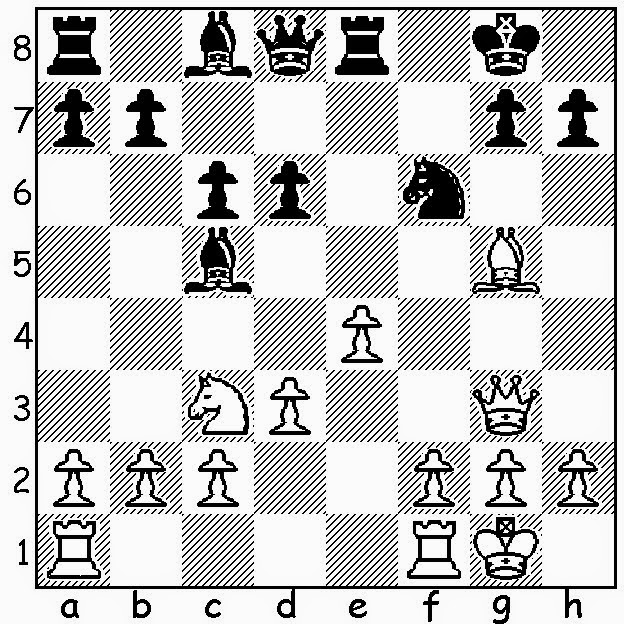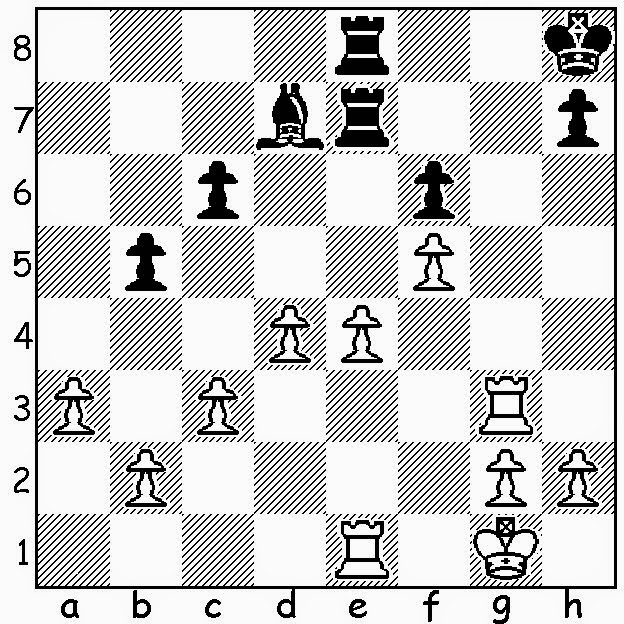Here is another "pawns vs piece" blitz game that stretches out, then ends with a humorous "bang".
Philidor 1792 - guest2498
3 0 blitz, www.bereg.ru, 2014
1.e4 e5 2.Nf3 Nc6 3.Bc4 Bc5 4.Bxf7+
4...Kxf7 5.Nxe5+ Nxe5 6.Qh5+ Kf8 7.Qxe5 d6 8.Qg3 Nf6
White has two pawns for his sacrificed piece. Black's King is a bit exposed.
9.d3 Kf7 10.Bg5 Re8 11.O-O Kg8 12.Nc3 c6
Black has castled-by-hand while white works on his development.
13.Na4 Bd4 14.c3 Bb6 15.Nxb6 axb6 16.f4 Qe7 17.Rae1 Qf7 18.a3 Bd7
Now Black's play becomes a bit unfocused, and White's Queen grabs a couple of pawns.
19.Qf2 Rf8 20.Qxb6 Rab8 21.Qd4 Ne8 22.f5 Nf6 23.Qxd6 Rbd8 24.Qb4 b5
25.Qc5 Rde8 26.Bxf6 gxf6 27.d4 Qe7 28.Qxe7 Rxe7 29.Rf3 Rfe8 30.Rg3+ Kf7 31.Rh3 Kg7 32.Rg3+ Kh8
White is comfortable with his chances in the pawns vs piece endgame. He has fought this fight before.
33.e5 fxe5 34.f6 Rf7 35.dxe5 Be6 36.Rd3 Bd5 37.Kf2 Kg8 38.g4 h6 39.h4 Kh7 40. g5 Re6 41.Ree3 Kg6 42.gxh6 Kxh6
43.Kg3 Kh5 44.Rd4 Rf8 45.Rf4 Rg8+ 46.Kh3 Rf8 47.Rf5+ Kh6 48.Kg4 Rg8+ 49.Rg5 Rxg5+ 50.hxg5+ Kg6
Black does his best to keep the "Jerome pawns" blockaded.
51.Kf4 Re8 52.Rh3 Bg8 53.Rh6+ Kf7 54.Kf5 Re6 55.g6+ Ke8 56.Rh8 Kf8
Now a tactical shot wins.
57.Rxg8+ Kxg8 58.Kxe6 c5 59.Kd6 Kf8 60.Kxc5 b4 61.Kb5 Ke8 62.Kxb4 Kd7 63.g7 Ke6 64.g8=Q+ Kf5 65.f7 Ke4 66.f8=Q
Kd3 67.e6 Ke4 68.e7 Kd3 69.e8=Q Kc2 70.b3 Kd3 71.Qg3+ Kc2 72.Qee1 Kb2 73.Qff2 checkmate
















































